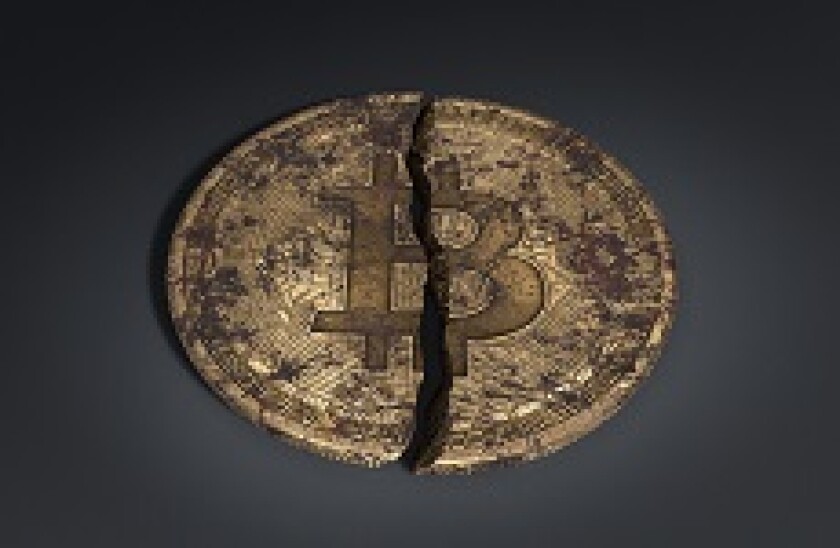The boom in the cryptocurrency economy has provided unparalleled returns for those investors lucky enough to have bought bitcoin, or a successful “alt-coin”.
Just this year, bitcoin has provided year-to-date returns of 617%, while an investor buying into every initial coin offering to date, including those that failed, would have generated a return of 1,320%, according to a report from Mangrove Capital Partners.
With numbers like that to offer, the level of hype the market has generated has been eye-watering. As a result, serious financial institutions are taking notice. Goldman Sachs has been widely reported to be considering starting a cryptocurrency trading desk.
The limiting factor is a chronic lack of liquidity in the market. The market is simply not of a size that can handle the scale of serious, global financial investment.
The supply of bitcoins increases at a decreasing rate and is capped at just under 21m. The 16.6m or so bitcoins currently in circulation are worth about $109bn, while the cryptocurrency market in total is worth about $207bn.
At least, it is at the time of writing. And that’s the real problem. It is not unusual for these numbers to change by 10%-20% in a day or two.
That doesn’t matter much really. Investors will lose money, but they signed up for those risks just as they signed up for the tantalising gains.
However, with the Chicago Mercantile Exchange promising bitcoin futures by the end of the year, and the Chicago Board Options Exchange discussing ETFs, the possibility of mass institutional exposure to bitcoin is fast approaching. With ETFs, as well as futures and options, the regulated financial system will be able to create as much synthetic exposure to the cryptocurrency sector as it can handle.
The trouble is that bitcoin is uniquely volatile and uniquely vulnerable. It is not a finished product, but under continuous development to alter its protocol.
Given the level of emotional attachment bitcoin is capable of inspiring, these changes can be extremely contentious, striking at the very heart of what people believe the purpose of bitcoin should be.
Turbulent past
Bitcoin was launched in 2008 as a currency. The blockchain technology it is built upon is a means of maintaining a ledger recording every bitcoin transaction. “Blocks” are analogous to pages of the ledger. Each node in the network receives the information about every transaction and attempts to discover a viable hash function for each new block, which takes roughly 10 minutes. This is a cryptographic process that guarantees that the ledger remains accurate (without requiring trust in a central overseeing body) by requiring unfeasible amounts of processing power to introduce fraudulent transactions. The successful miner is awarded new bitcoins for verifying the ledger.
Over the years, however, bitcoin has suffered the same fate that every economics student knows is the fate of any deflationary currency. It became unspendable. If a currency increases in value over time, why would you spend it today when you can spend it tomorrow?
Coupled with this, the size of the blocks means that only a small number of transactions can be processed in each block. In order to get your transaction processed immediately, you need to pay the miners to include your transaction in their next block.
Some argue that bitcoin is finding a new purpose as a store of value, rather than a usable means of exchange, and that this trend should support its price. Others believe its utility as a payments system is more important and that bitcoin’s value will continue to rise because it will become popular as a means of payment, which can only happen if changes are made to cut transaction fees.
As a result, the community has been riven with controversy. Miners are understandably keen to keep block sizes small and protect the fees this earns them, while others argue that this is a short-sighted approach. The controversy has led to schisms, one of which resulted in “bitcoin cash” — an alternative currency with lower transaction costs that split from bitcoin in August.
Far from settling the debate, this has made the community more divided than ever and the prices of both assets have swung wildly over the past couple of weeks as miners and users have flipped between them.
Until bitcoin has not just a stable value, but a stable vision of what it is and what it should be used for, it will remain unsuitable for investment by mainstream institutional investors.
No matter how attractive the returns and the volatility may be, it’s too early for exchanges to start exposing the functional financial system to the means to speculate on such an asset.

